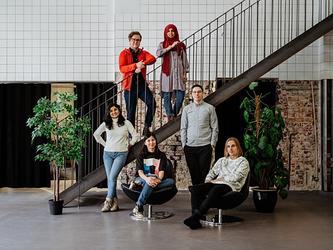Filming success: TikTok in the retail world
The past two years have been revolutionary for TikTok. The app was the most downloaded in the first quarter of 2022, according to research by Sensor Tower, with TikTok claiming more than a billion users worldwide.
The result is that brands have begun to take the platform seriously. Woolworths is a major retail brand in South Africa, with a smaller business in Kenya, and wanted to connect with 18 to 24-year-olds. TikTok is used by 74% of South African 18 to 24-year-olds and 67% of Kenyans in the same age bracket.
The company hired Hello Ara, a South African conversational artificial intelligence (AI) business, to provide greater insights into young people’s use of TikTok and their thoughts on the Woolworths brand and social media presence.
Hello Ara used a chatbot, called Kia, to speak to young people in Kenya and South Africa about Woolworths.
The researchers carried out a survey of approximately 100 Kenyans and 150 South Africans aged 18 to 24, all living in urban areas and using social media, through Cint’s research panel.
The chatbot was available to participants through a weblink on their chosen device.
Hello Ara carried out further analysis of TikTok influencers, with respondents to the chatbot study identifying the key individuals they followed on the app.
This was followed by video and audio analysis of influencers’ publicly available content to help understand what young people were most likely to engage with.
According to Karlien Kriegler, co-founder and research director at Hello Ara, the analysis helped provide a greater understanding of the main life goals and feelings held by young people in Kenya and South Africa. The research found ‘high levels of ambition’ and a fear of failure among respondents, according to Kriegler.
“They are incredibly ambitious,” she explains. “But when you talk about their fears, their biggest is failure.
“You can feel the pressure on them – they are young, want to change the world and do their own thing.”
This also transferred to young people’s relationship with brands. The analysis found that 44% of respondents agreed that brands should help them to achieve their life goals.
When participants were asked about their perception of Woolworths, some of these views filtered through, alongside thoughts on the cost of shopping at the business. “The first thing they mentioned was price, as it was a more premium brand,” says Kriegler. “But the other mentions were all about how the brand would relate to them as people. They wanted the brand to speak to them in a way that they could relate to. There is a lot the brand could do for that consumer.”
The project also analysed Woolworths’ TikTok presence. The majority of successful TikToks on the platform from influencers normally coalesced around three areas: ‘monologues’ that are mostly speech and showcase points of view or educational content; ‘ta-da moments’ that combine monologues with music; and ‘being in the moment’ showing dances, parties and other snapshots of daily life. Broadly, successful TikToks either showed a skill, helped make connections or provided insight into someone’s life.
Research participants viewed Woolworths as having a ‘mixed approach’ to TikTok, using a combination of speech with a small amount of music and clips with a greater quantity of music content, as well as being overly focused on its food range.
The researchers recommended that Woolworths focus more on fashion, its sustainability credentials, great online experiences and engagement on social media.
Kriegler says that engagement is key for brands on the app. “A lot of brands are quite tentative on TikTok,” she adds.
“Some have almost no presence, others have gone for it.
“It is about understanding what the brand manifests as with the younger generation on TikTok.
“What does my brand look like in this high-energy, short video, young person’s world?”
This article was first published in the October 2022 issue of Impact.

We hope you enjoyed this article.
Research Live is published by MRS.
The Market Research Society (MRS) exists to promote and protect the research sector, showcasing how research delivers impact for businesses and government.
Members of MRS enjoy many benefits including tailoured policy guidance, discounts on training and conferences, and access to member-only content.
For example, there's an archive of winning case studies from over a decade of MRS Awards.
Find out more about the benefits of joining MRS here.














0 Comments